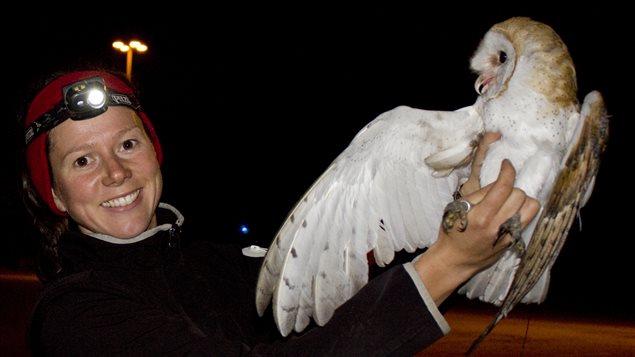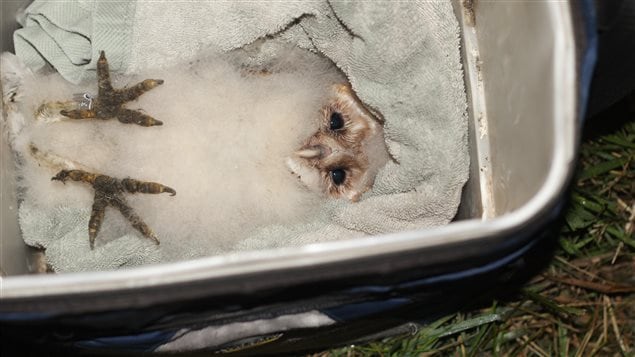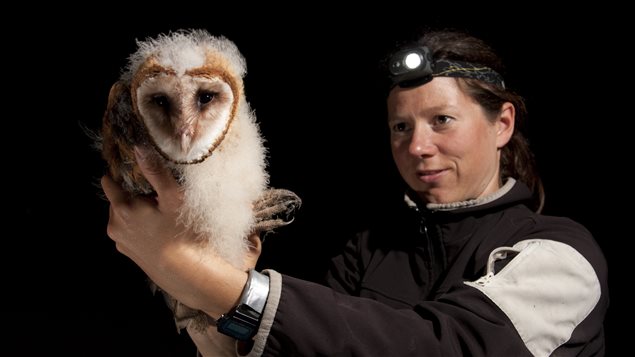A new study suggests barn owls near the western city of Vancouver are adapting to an urban environment but face risks from the use of rat poison and from cars as they hunt along roadsides. Wildlife biologist Sofi Hindmarch explains the type of research she and colleagues used, called radio telemetry.
Listen
‘The big challenge is…trapping an owl’
“You put a transmitter on an owl and then you follow where it’s hunting. So, the big challenge is, first of all, trapping an owl and attaching a transmitter, and then being able to follow it.”
The researchers used mouse calls to attract the attention of the owls. They were lured into traps baited with mouse. Researchers waited in a nearby car and jumped out as soon as an owl became trapped, set a transmitter on it and released it. In all, 10 owls were successfully fitted and followed for almost one year.

Nesting in buildings, under bridges
“We found that there are some owls in our urban environment and they are adapting to some extent,” says Hindmarch. “They are hunting in fairly urban areas. Some barn owls nest in industrial buildings. Some were nesting under bridges. And some had incredibly large home ranges—way larger than we had initially expected them to have.”
The researchers also found the owls hunted more along highways that they had expected. They suspect that is because there is not very much of their traditional grass habitat left due to increasing development of what was agricultural land just a few decades ago.

Prey may contain rat poison
Hunting along highways exposes them to prey which is more likely to have been treated with rat poison. The other danger they face is being hit by vehicles, which Hindmarch says is a key mortality factor.
“A key message to developers and municipalities in our region is to ensure that we retain some grass habitat for barn owls and also places for them to nest and breed as our areas become increasingly urban.”
The study can be found at ScienceDirect.








For reasons beyond our control, and for an undetermined period of time, our comment section is now closed. However, our social networks remain open to your contributions.